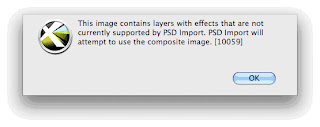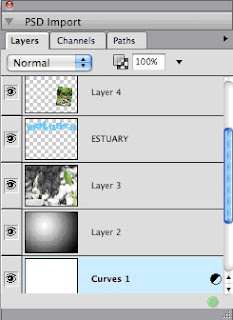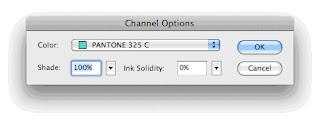The desktop publishing software wars have been going on for about two decades now and there still isn't a clear winner. In fact, there are more tools to use now than ever before to get a project printed, including
Apple's Pages, and Corel's
CorelDRAW Graphics Suite. With the addition of multiple artboards,
Adobe Illustrator CS4 can now be used the way everyone wanted to use it - for page layout and print jobs.
But the two giants in this category are
QuarkXPress and
InDesign. Quark had a long hold on the industry with little competition for the longest time. So long, in fact, that they didn't really do a major upgrade from Quark 4 (1997) to 5 (2002) for a period of 6 years. At that time, Apple was transitioning their operating system to the Unix-based OSX and Quark refused to recode their application until Quark 6 came out in 2003.
It was during that long stretch that Adobe, who had limited success with PageMaker, decided to scrap the application they bought from Aldus and start all over, inventing the "Quark Killer", as it was then Called, InDesign. With a list of features that every designer was pining for - transparency, effects, creative suite integration, InDesign 1.0 (1999) came out like a lion with rave reviews. Technical glitches and bugs in the program hampered the experience for some and Pre-press providers and printers couldn't output all those glorious transparencies accurately.
Adobe quickly regrouped and came out with subsequent versions, InDesign 1.5 in 2001 and InDesign 2.0 in 2002 (Still not integrated into any Suites yet), gently massaging out all of the product bugs. Adobe also did a good job in listening to its core user base in adding features that drew the attention of long-time Quark users, such as Nested Styles, and true PDF output, somehting Quark still has difficulty with.
Finally, in 2003, Adobe introduced the first version of the Creative Suite, updating all of its core programs (after the purchase and migration of Macromedia) into a powerful suite of application programs that are tightly integrated. The end result, clearly a better workflow solution for any designer. Instead of moving back and forth between Photoshop and Quark, InDesign users could actually place native Photoshop files into InDesign, make edits to the original Photoshop file, and then simply update the link. Quark users would have to make extra trips to Photoshop, save out static versions of their files as TIFF or EPS and replace their content.
Like the other InDesign releases, InDesign 3.0 offered more and more features that drew more users away from Quark. Now Adobe was gaining momentum. Adobe
InDesign User Groups started forming all around the country and industry professionals also began migrating to Quark.
Other factors that kept Quark at bay for many users was its price point. InDesign - integrated with at least five other applications in the Creative Suite, was selling for a price that was still less than Quark. Quark 8's current cost is $799. InDesign is $699, by itself. Educational prices are better for both, but the clear winner in the price category is InDesign.
So what's keeping Quark afloat? A deep user base and a lot of investment on the part of those organizations who bought the app and are not willing to let it go. Call it loyalty or a desire not to lose out on an investment, but Quark was deeply rooted in the publishing industry for so long. Pariah S. Burke tells it best on his site
Quark Vs. InDesign:
"Quark is dying, fast. The thing that’s keeping it alive at this point is the inherent nature of the relevant markets: Switching such an integral tool within a fast-paced, tight-margined production workflow is costly in terms of licenses, training, and lost productivity for learning. In this arena InDesign has the upshot of being very similar in user interface to already established tools like Photoshop and (especially) Illustrator. While that fact doesn’t do much for layout-only artists, it does help significantly with migration expenses and issues with artists who use multiple products."
QuarkXTensions also may have a play in whether it stays or goes. XTensions are like InDesign plug-ins that extend the functionality of Quark in terms of what its capabilities are. A lot of pre-press vendors and printers have invested heavily in these extensions, which perform tasks like pagination, output procedures, preflighting, and conversions. It's another part of their original investment which is hard to part with.
Recent rumors and announcements have suggested that Quark will move away from making its desktop software and go to an
enterprise server-side solution. Enterprise software isn't cheap and this product won't be for the masses. It's a serious paradigm shift for Quark, one that can only indicate imminent defeat.
I spoke with a print vendor recently to get his thoughts on Quark's demise. Carl Feren of Feren and Co. has been in the printing industry for over twenty years. As Feren points out:
"In the past three – four years I have only had ONE client who used Quark. My other clients use either Corel, Illustrator or InDesign. I can’t think of anyone who prefers Quark over InDesign. The one person who does use it simply does not want to invest in additional software."
Even with the release of Quark 8, the reviews have been a little lackluster. MacWorld Magazine sees it as a dilemma for any Quark owner to actually upgrade to this version:
"QuarkXPress 8 poses somewhat of a dilemma. Because it offers very few new functions—and none that have broad utility—it’s hard to make the economic case to upgrade from the previous version. The most significant new capabilities—those derived from Quark Interactive Designer and the free XPert Tools—can be had for just $49 if you stick with XPress 7.3."
This in comparison with InDesign CS4, which - comparitively - has a slew of new features like Cross-References, SWF export, Page Transitions, Spread Rotation, etc.
Personally, I see Quark winding down as indicated
here. I haven't used it outside of the classroom for any major projects and can't see why I would ever switch to Quark for a number of reasons. This battle though, kind of reminds of Freehand vs. Illustrator. Depending on which program you used first, you became fiercely attached to it and the separate camps fought openly about feature sets and capabilities. In the end, Adobe killed off Freehand and they'll probably be able to do the same with Quark.


